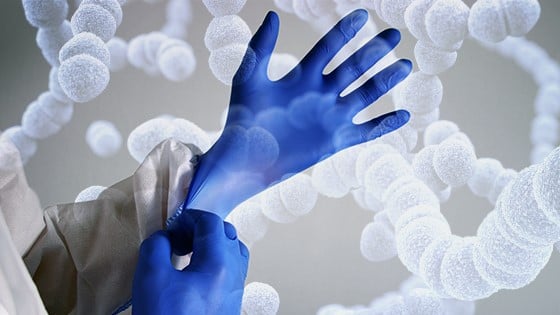Environmental cleaning in the Sterile Processing Department (SPD) is critical for reducing the risk of disease transmission. All SPD areas should have cleaning procedures established by a multi-disciplinary team and include personnel responsible for environmental cleaning and infection prevention. This is a collaborative project, and the team members need to work together to achieve compliance.
Cleaning Overview
Cleaning and disinfection of areas within SPD should be performed daily, at minimum, if the area has been used. It should not be done during the cleaning or sterilizing of any instruments as this could lead to mixed chemicals or cross contamination.
It is recommended to always work through the clean areas first, leaving the dirtiest areas last to prevent the spreading of contaminants. Proper attire and PPE should be donned and doffed for each area.
Cleaning Supplies
Equipment and supplies needed should be approved per the facility and include, but are not limited to:
- Detergents and disinfectants
- Non-linting clothes
- Non-linting mops
- Single-use disposable wipes
Verify all chemicals used are appropriate for the equipment by consulting the manufacturer’s instructions for use (IFU). Ensure all chemical containers are properly labelled according to your facility and standards.
All equipment and supplies used in the decontamination space should be strictly designated for that area to prevent cross contamination.
Daily Cleaning Tasks
Daily cleaning can include the following tasks, which can be shared cleaning responsibilities between SPD and Environmental Services:
- Counter tops and shelving
- Sinks and wash basins, including eye wash stations
- Computer Accessories (touch screen monitors, keyboards, mouse)
- Light switches
- Telephones and mobile communication devices
- Trash and linen receptacles
- Empty trash when full or, at minimum, once daily
- Cleaning floors, utilizing a single use wet mop
- When cleaning floors, make sure to progress from the cleanest to the dirtiest areas of the floor
Scheduled Deep Cleaning
Scheduled deep cleaning is a more intense cleaning schedule that defines areas and equipment that should be cleaned on a regular basis (weekly, monthly) according to the manufacturers’ IFU or facility policy. Consider the following equipment and areas when planning your scheduled cleaning:
- Sterilizers and sterilizer loading carts
- Air vents and sprinklers
- Lighting fixtures
- Stained ceiling tiles
- Walls (including behind moveable equipment/tables
- Storage shelves
- Under and behind moveable items
- Sterilizer service access rooms
Regulatory Compliance
When it comes to cleaning and staying on schedule, try to utilize checklists to prevent human error or missed cleaning of items. Keeping up with environmental cleaning is important not just for the safety of your patients but also for your facility to stay in good standing with regulatory agencies.
They will focus on many areas, including:
- Daily cleaning versus deep cleaning
- Inside storage areas and bins
- Behind closed doors and under racks
- Hidden corners and high-level flat spaces
- Stained ceiling tiles and areas with visible water damage
If you don’t already have a system or process in place to stay on top of environmental cleaning in your SPD, consider adopting a system today. Put checkpoints in place so that you know whether the steps are being followed correctly. At the end of the day, it is the SPD’s responsibility to stay clean to process and sterilize assets correctly and guarantee patient safety.
Reference: AAMI ST79: 2017 Amendment 1


